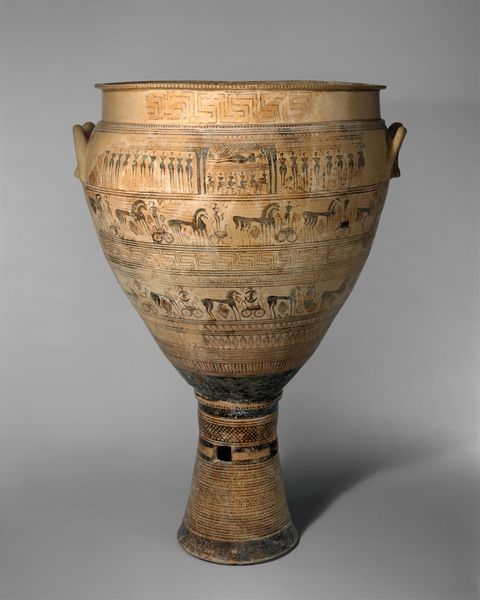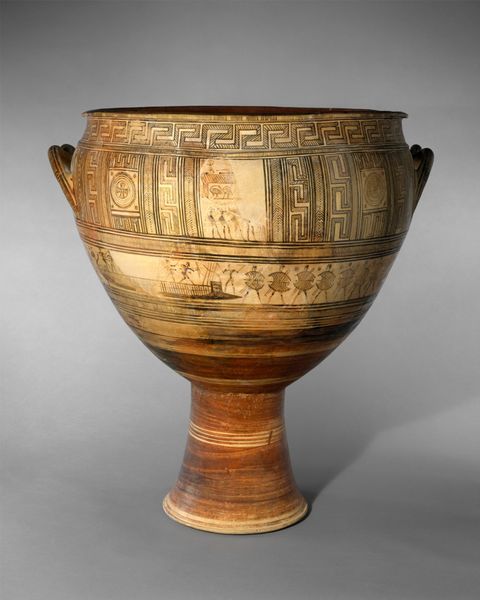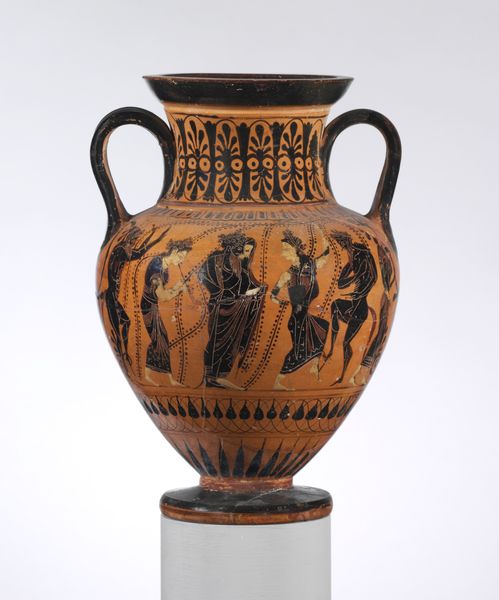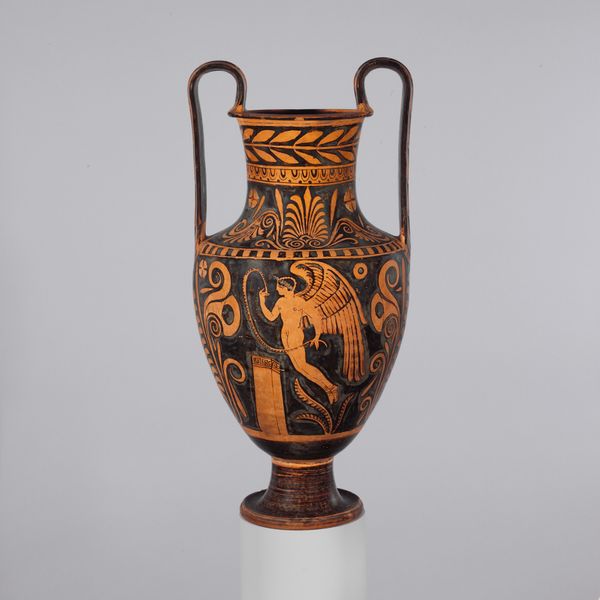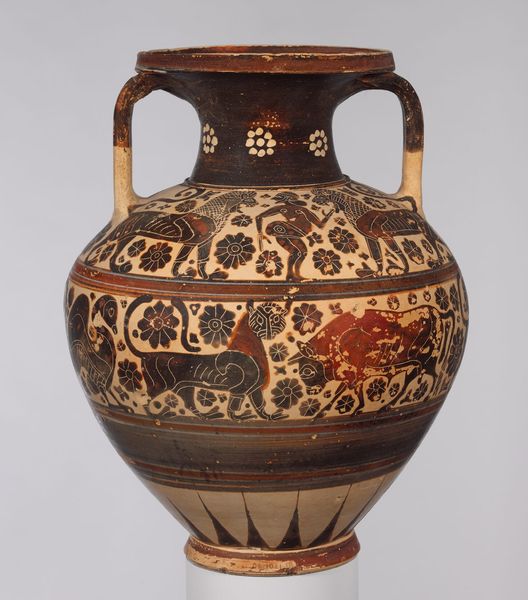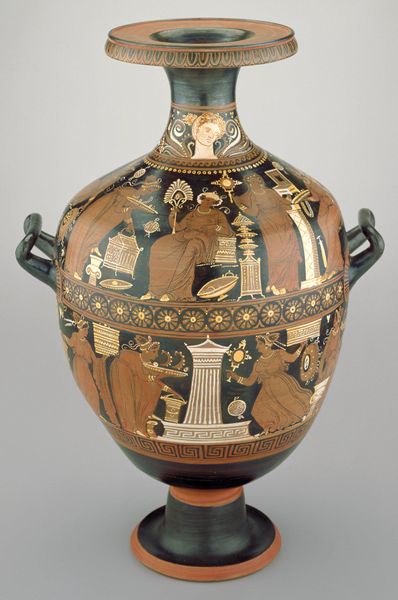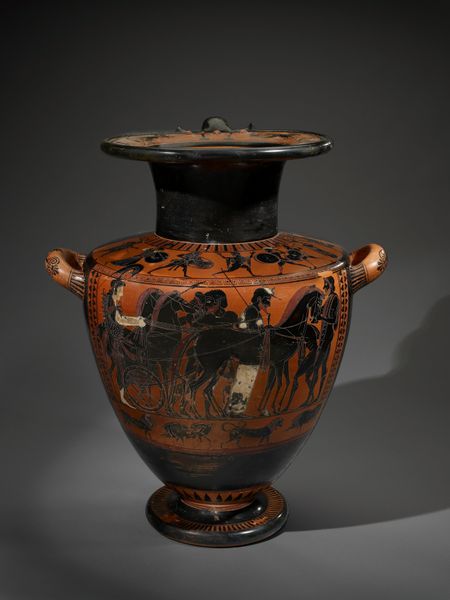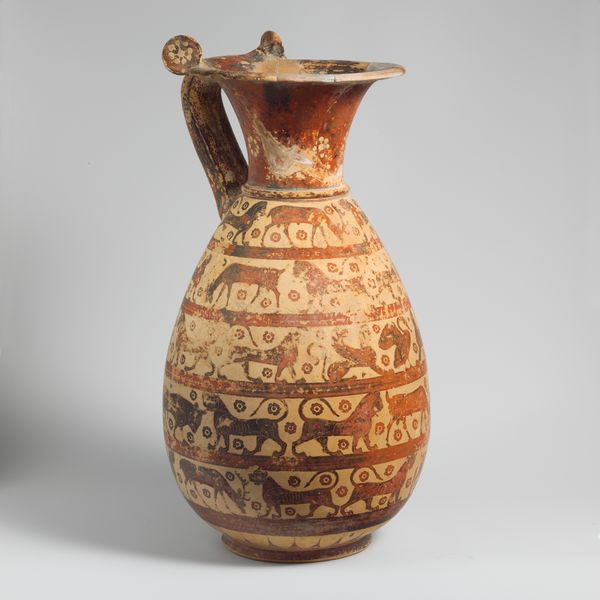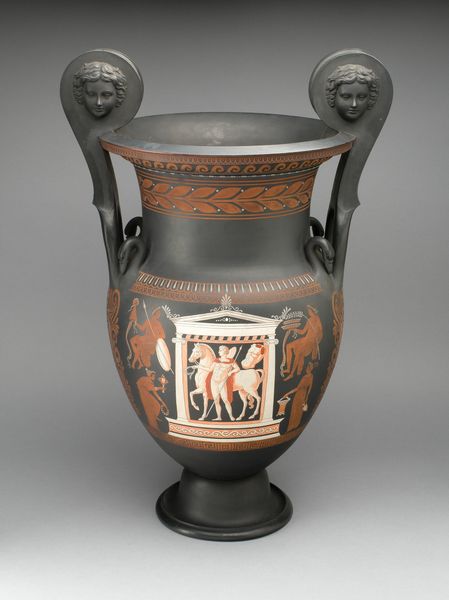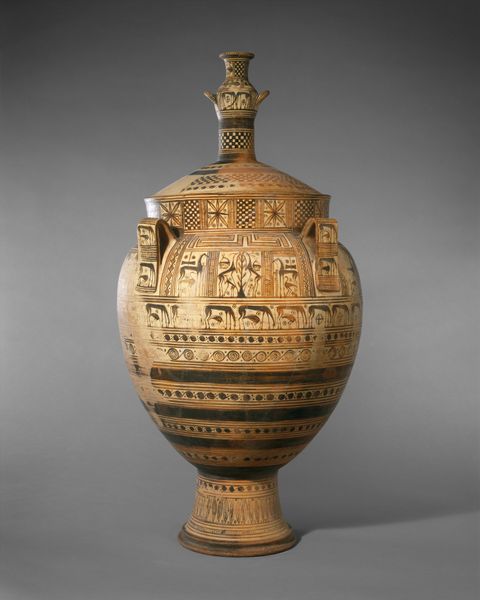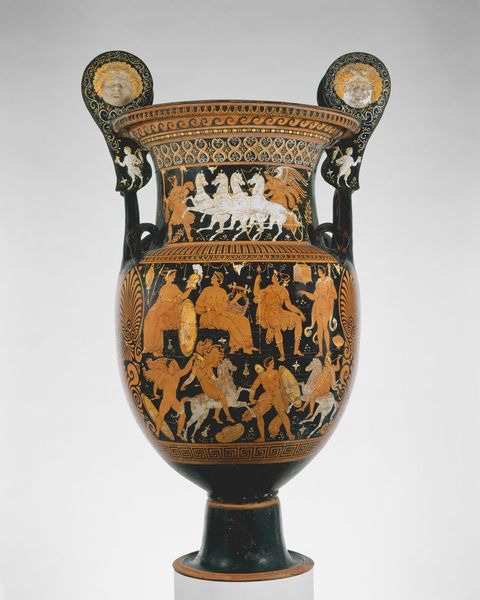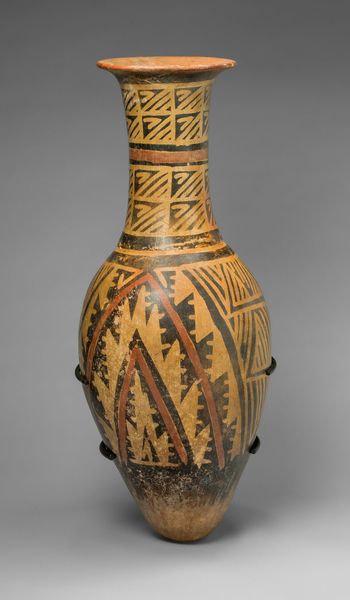
ceramic, sculpture
#
narrative-art
#
pottery
#
sculpture
#
greek-and-roman-art
#
ceramic
#
figuration
#
stoneware
#
ancient-mediterranean
#
sculpture
Copyright: Public domain
The Hirschfeld Krater is a piece of ancient Greek pottery, created sometime between 900 and 31 BC, that offers insights into the funerary rituals and social structures of its time. This large vessel, decorated with geometric patterns and figurative scenes, speaks volumes about the era's values. Notice the depiction of a prothesis, a ritual display of the deceased, surrounded by mourners with their arms raised in grief. These figures, rendered in a stylized manner, reveal a society deeply concerned with honoring the dead and maintaining social order through elaborate ceremonies. The Krater also gives hints about gender roles: women were central to funerary rites, their presence and gestures serving as powerful expressions of loss. Yet, their representation remains within the confines of prescribed roles. The scenes of warriors and chariots remind us of the importance of warfare and aristocratic values, as well as the patriarchal structure of ancient Greek society. The emotional intensity of mourning is palpable, inviting us to reflect on universal experiences of loss and remembrance, as well as the specific cultural practices that shaped ancient Greek identity.
Comments
No comments
Be the first to comment and join the conversation on the ultimate creative platform.
